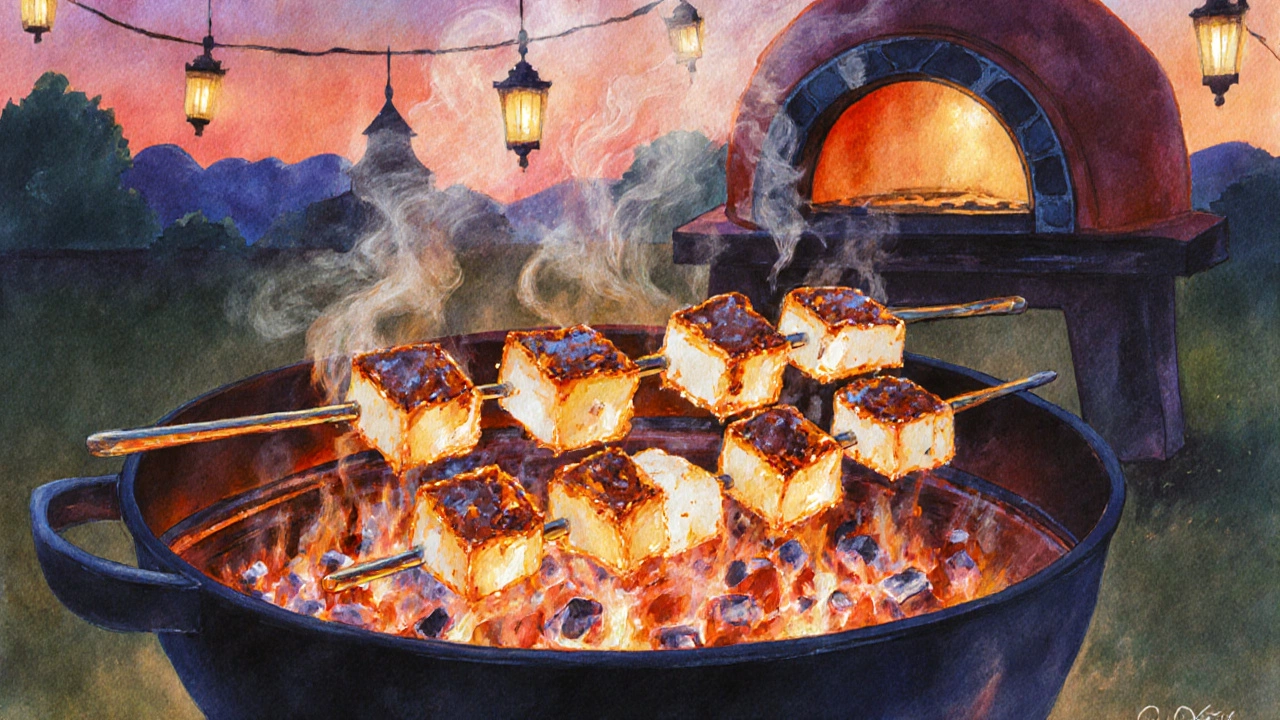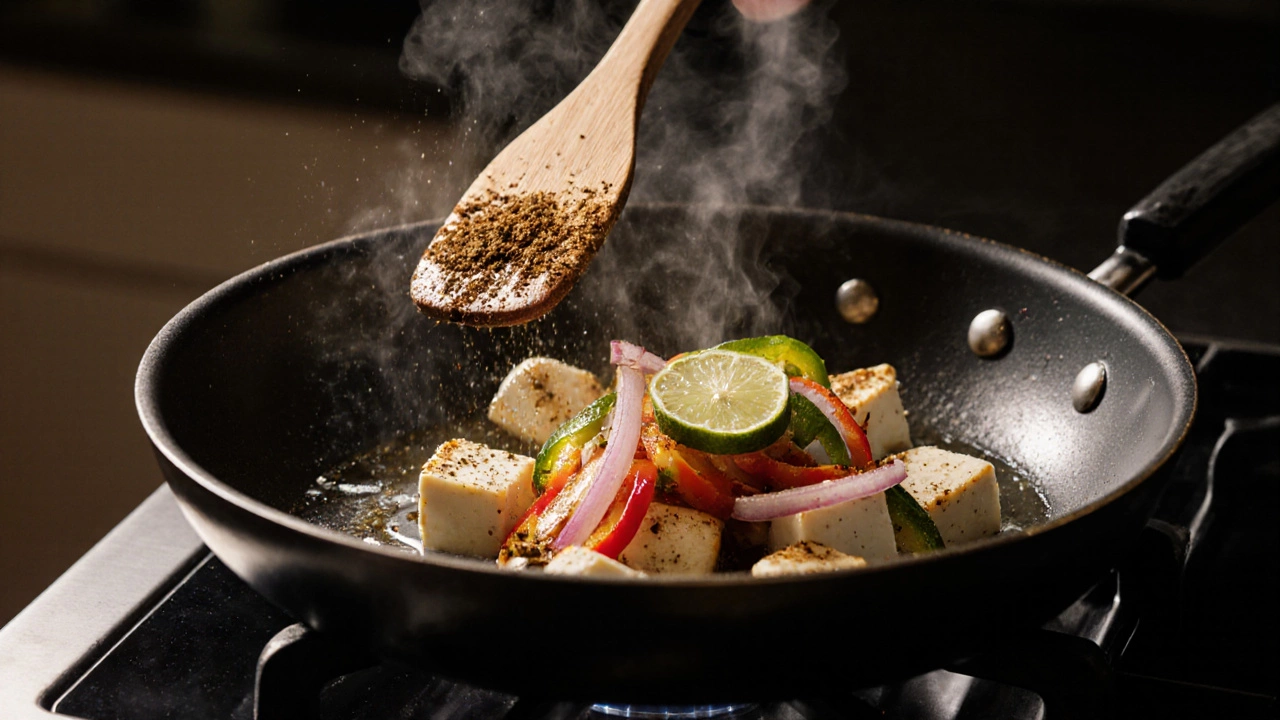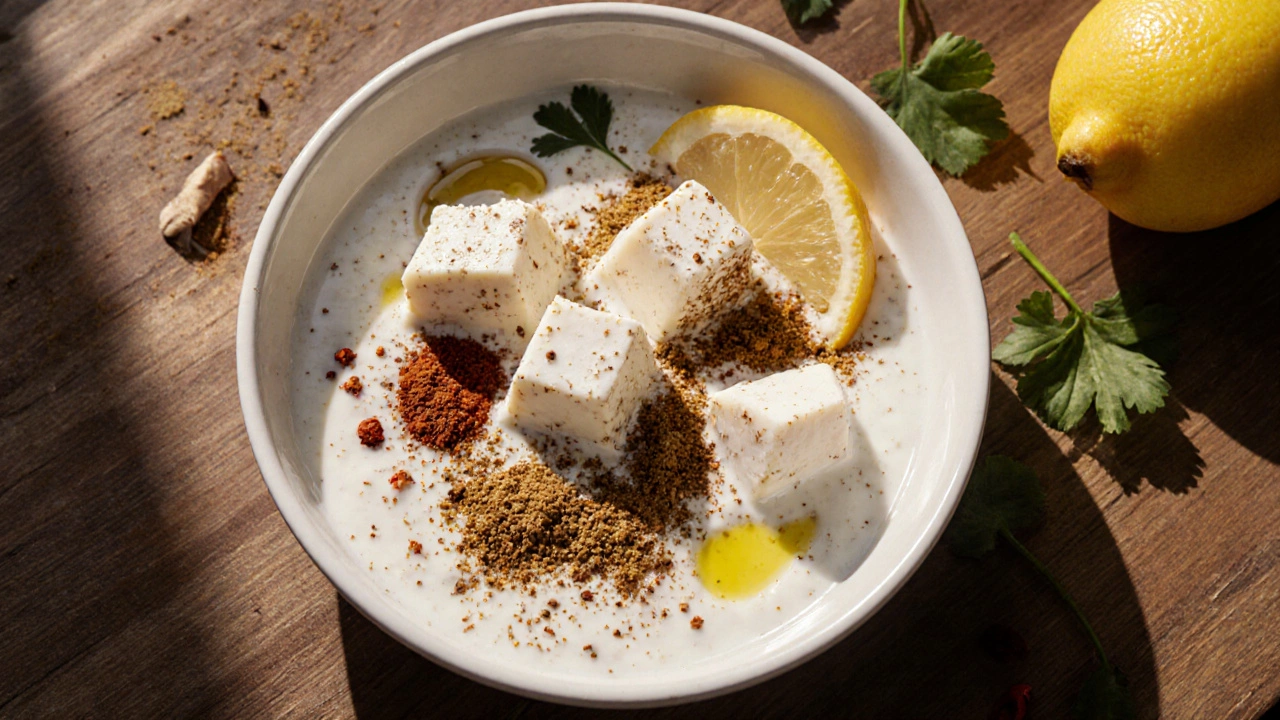Paneer Marination Decision Helper
Recommendation
Quick Takeaways
- Marinating paneer adds flavor and keeps it moist, especially for grilling or baking.
- For quick stir‑fries or soups, a light coating of spice is enough-no long soak required.
- Simple yoghurt‑based marinades work best; they’re cheap, creamy, and help brown the cheese.
- Over‑marinating can make paneer mushy; 30minutes to 2hours is usually sufficient.
- Follow a few pro tips and you’ll avoid common slip‑ups like a dry texture or bland taste.
When you hear Paneer is a fresh Indian cheese made by curdling milk with lemon juice or citric acid, then pressing the curds into blocks, you might wonder if it needs a flavor boost before cooking. The short answer: it depends on the dish, the cooking method, and how much time you have. Below we break down the science, the best situations to marinate, a go‑to recipe, and a few shortcuts when you decide to skip the soak.
What Marination Actually Does
Marination is the process of soaking food in a mixture of Marinade is a blend of acid, oil, herbs, and spices designed to flavor and tenderize ingredients. For paneer, the main goals are:
- Flavor infusion: The porous surface of paneer absorbs salty, tangy, or spicy notes.
- Moisture retention: An acidic component (often yoghurt or lemon juice) creates a thin film that locks in water during high‑heat cooking.
- Surface browning: Sugars or oil in the mix promote Maillard reactions, giving you that coveted golden crust.
Because paneer is a relatively firm cheese with low fat, it doesn’t need a tenderizing agent the way meat does. The “tenderizing” benefit is really just about preventing it from drying out.

When Marinating Makes a Big Difference
Not every paneer dish benefits equally. Here’s a quick guide:
- Grilled or baked kebabs (tikka, skewers, paneer tikka): A 30‑minute to 2‑hour soak in a yoghurt‑spice blend adds depth and keeps the cubes from turning rubbery.
- Stir‑fry dishes (paneer bhurji, masala paneer): A light dusting of spice or a quick 10‑minute dip in oil‑spice mixture does the trick; long marination isn’t necessary.
- Curries with heavy gravies (paneer butter masala, shahi paneer): The sauce itself supplies most of the flavor, so you can skip marinating unless you love extra zing.
- Snacks served cold (paneer salad, sandwich fillings): A short soak in lemon‑yoghurt adds freshness and prevents the cheese from being bland.
In short, if high heat or a dry surface is involved, marination shines. When the cheese swims in sauce, the sauce does the heavy lifting.
Simple Marination Recipe - The One‑Minute Miracle
This is the go‑to recipe for most home cooks. You only need a few pantry staples, and the whole process takes under five minutes of active prep.
- Cut Paneer into 1‑inch cubes or slices, depending on your dish.
- In a bowl, combine ½cup plain Yogurt is thick, cultured dairy that adds tang and moisture, 1tbsp lemon juice, 1tsp ginger‑garlic paste, 1tsp ground cumin, 1tsp garam masala, ½tsp chili powder, and a pinch of salt.
- Add a drizzle (1‑2tbsp) of oil-vegetable or mustard works well-to help the spices cling.
- Stir the paneer cubes gently until they’re coated. Let sit for 30minutes at room temperature or up to 2hours in the fridge.
- Skewer or arrange on a baking sheet and cook over medium‑high heat (grill, oven, or pan) until golden-about 3‑4minutes per side.
Feel free to swap out the spice blend: smoked paprika for a BBQ vibe, or fenugreek leaves for a more traditional flavor.

Skipping the Marinade: Fast‑Track Cooking Tips
If you’re short on time, here’s how to get tasty paneer without a full soak:
- Season right before cooking: Sprinkle salt, pepper, and a pinch of chaat masala directly onto the cubes. The heat will lock in the seasoning.
- Use a hot pan with a thin oil film: A non‑stick skillet heated to medium‑high, with 1tbsp oil, creates a quick sear that mimics a short marination.
- Add a splash of liquid at the end: A quick dash of soy sauce, vinegar, or even a squeeze of lime just before removing from heat revives the cheese.
- Combine with aromatic veggies: Toss paneer with sautéed onions, bell peppers, and fresh cilantro. The veggies impart flavor instantly.
These shortcuts work best for dishes where paneer is a secondary ingredient, like vegetable pulao or quick wraps.
Common Pitfalls & Pro Tips
Even seasoned cooks run into a few hiccups. Here’s what to watch out for:
| Aspect | Marinated | Non‑Marinated |
|---|---|---|
| Flavor depth | Rich, layered spices soak into surface | Milder, relies on sauce or seasoning later |
| Moisture | Stays juicy during grilling/baking | Can dry out if overcooked |
| Cooking time | Slightly longer for caramelization | Quick sear, but watch for toughness |
| Best uses | Tikka, kebabs, baked dishes | Stir‑fries, curries, salads |
Tip #1: Don’t over‑marinate. Paneer’s structure breaks down after about 3hours, turning mushy.
Tip #2: Pat the cubes dry before searing if you want extra crispness. Excess moisture interferes with browning.
Tip #3: Use a Skewer is a metal or bamboo rod used to hold food for grilling when grilling. Spacing the pieces prevents steaming and encourages a nice char.
Tip #4: For a smoky flavor without a grill, try the Tandoor is a traditional clay oven that imparts intense heat and smokiness setting in your oven-preheat to 250°C, place a tray with a bit of water, and roast the paneer for 10‑12minutes.
Answering the Most Asked Questions
Do I have to marinate paneer for kebabs?
Marinating isn’t mandatory, but it dramatically improves flavor and prevents the cubes from drying out on the grill. A 30‑minute yoghurt‑spice soak is enough for great results.
Can I use store‑bought paneer?
Yes. Fresh store‑bought paneer works fine. If it feels very firm, give it a quick rinse in warm water to loosen the texture before marinating.
How long can I keep paneer in a marinade?
Ideally 30minutes to 2hours in the fridge. Beyond 3hours the cheese may become overly soft and lose its bite.
Is yoghurt the best acid for marinating paneer?
Yoghurt is popular because it adds creaminess, tang, and a bit of fat that helps browning. Lemon juice or vinegar work too, but they can make the cheese grainy if left too long.
Can I freeze marinated paneer?
Yes, but freeze it in a single layer on a tray first, then transfer to a zip‑lock bag. Thaw in the fridge and give it a quick rinse to remove excess marinade before cooking.
Whether you choose to marinate or not, the key is matching the technique to the dish. A quick dip for a stir‑fry saves time, while a proper yoghurt soak transforms kebabs into restaurant‑style bites. Now you’ve got the facts, the recipes, and the pitfalls covered-go experiment and find the flavor level that suits your palate.
